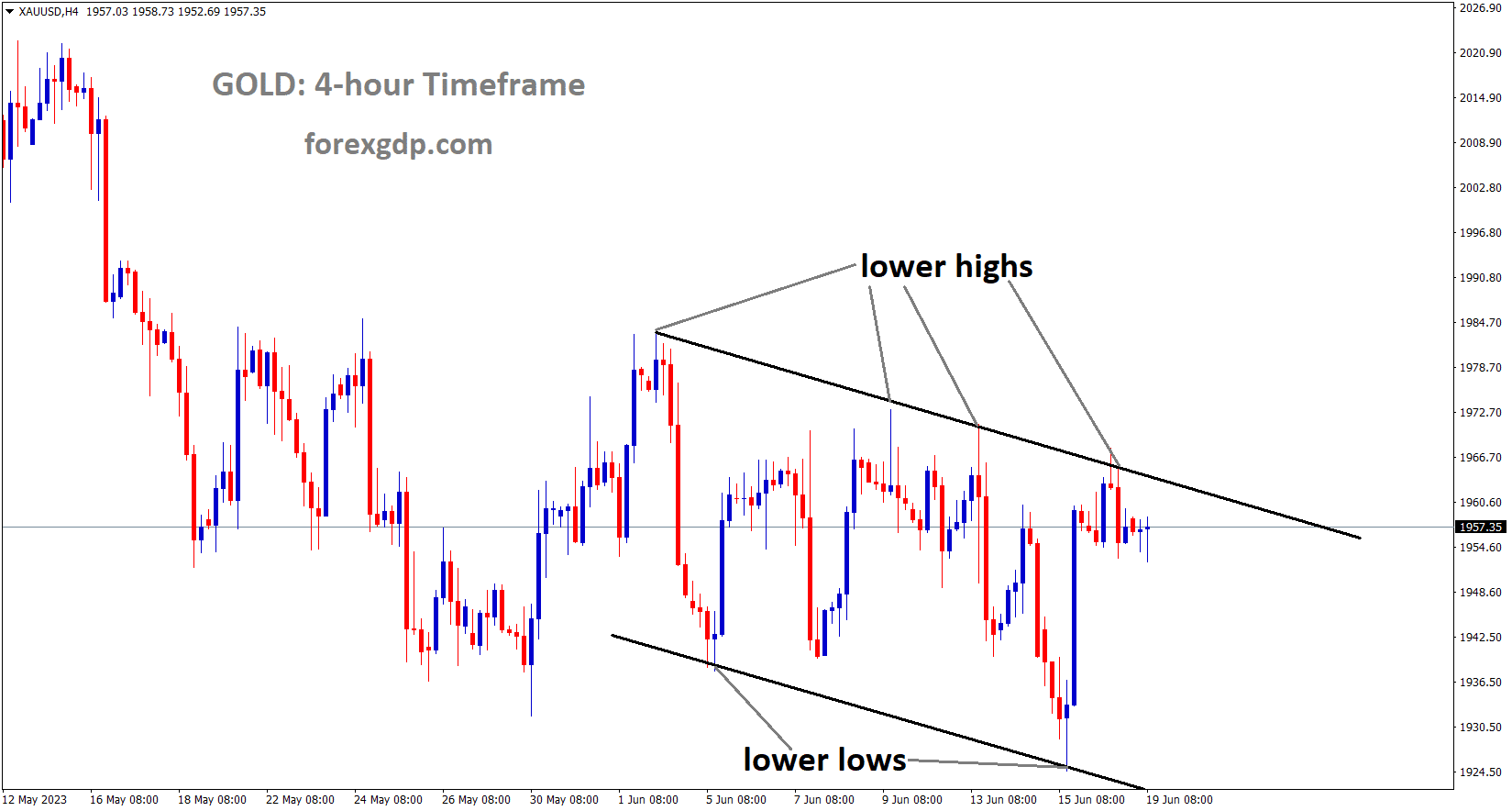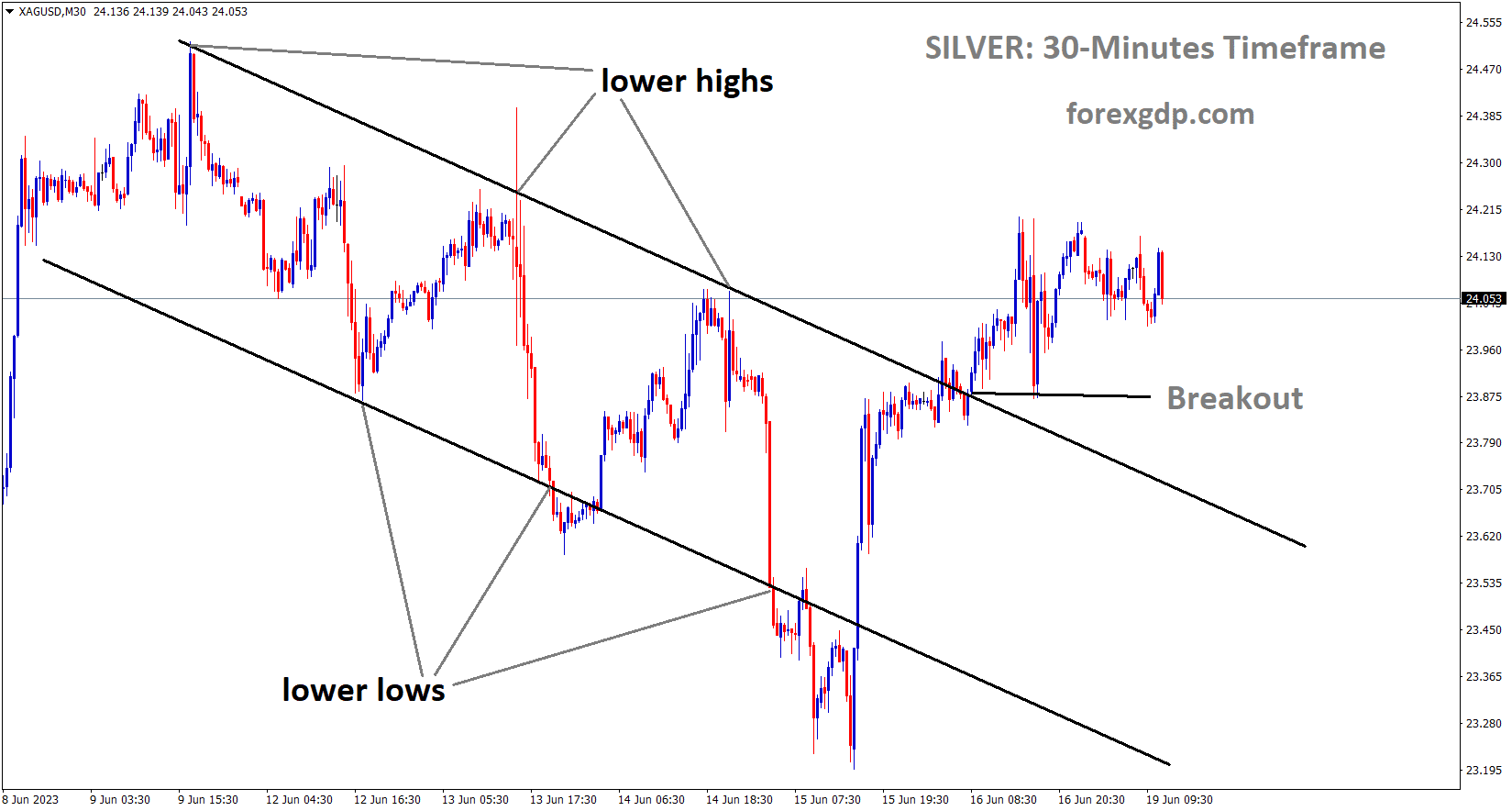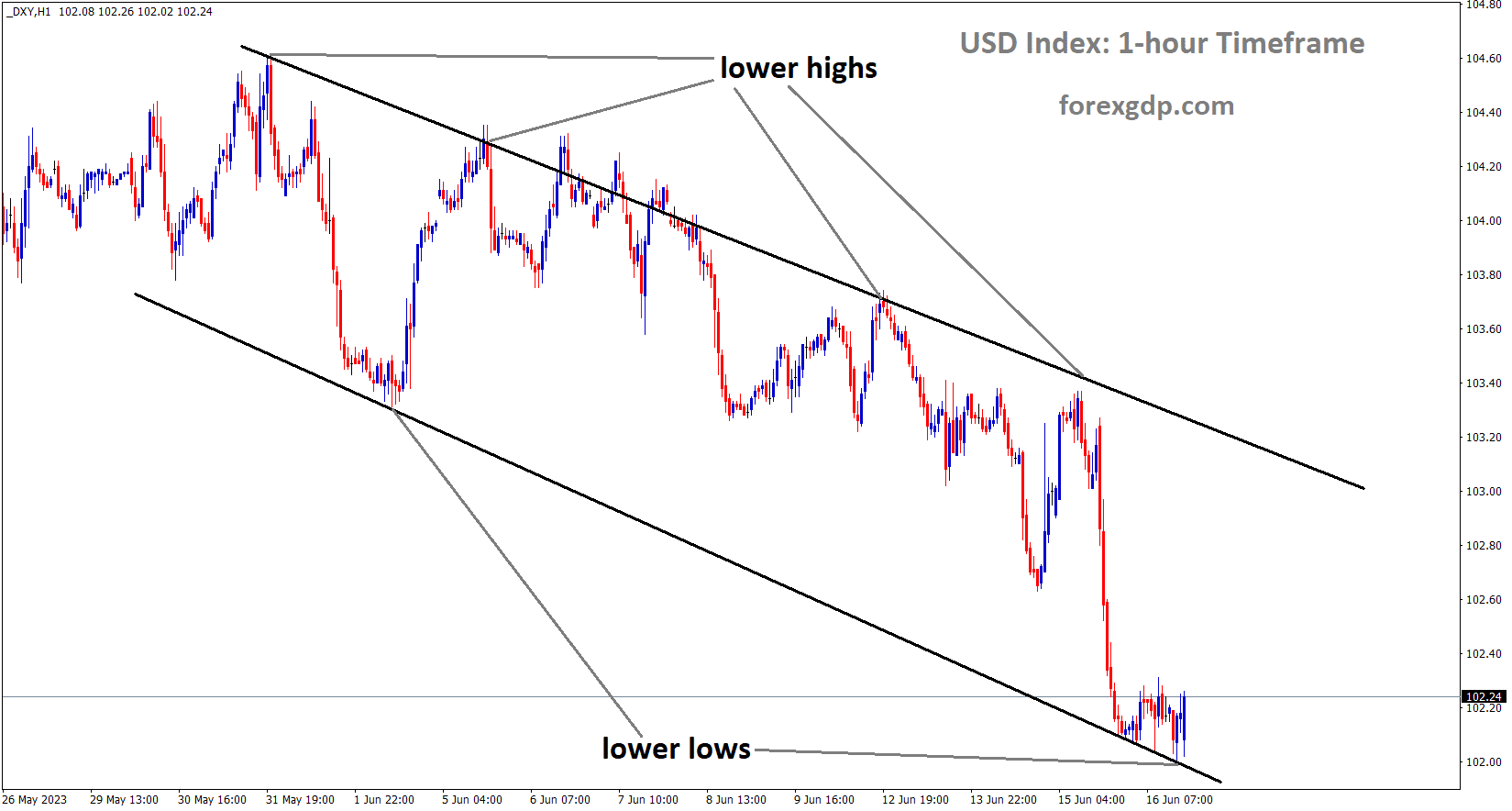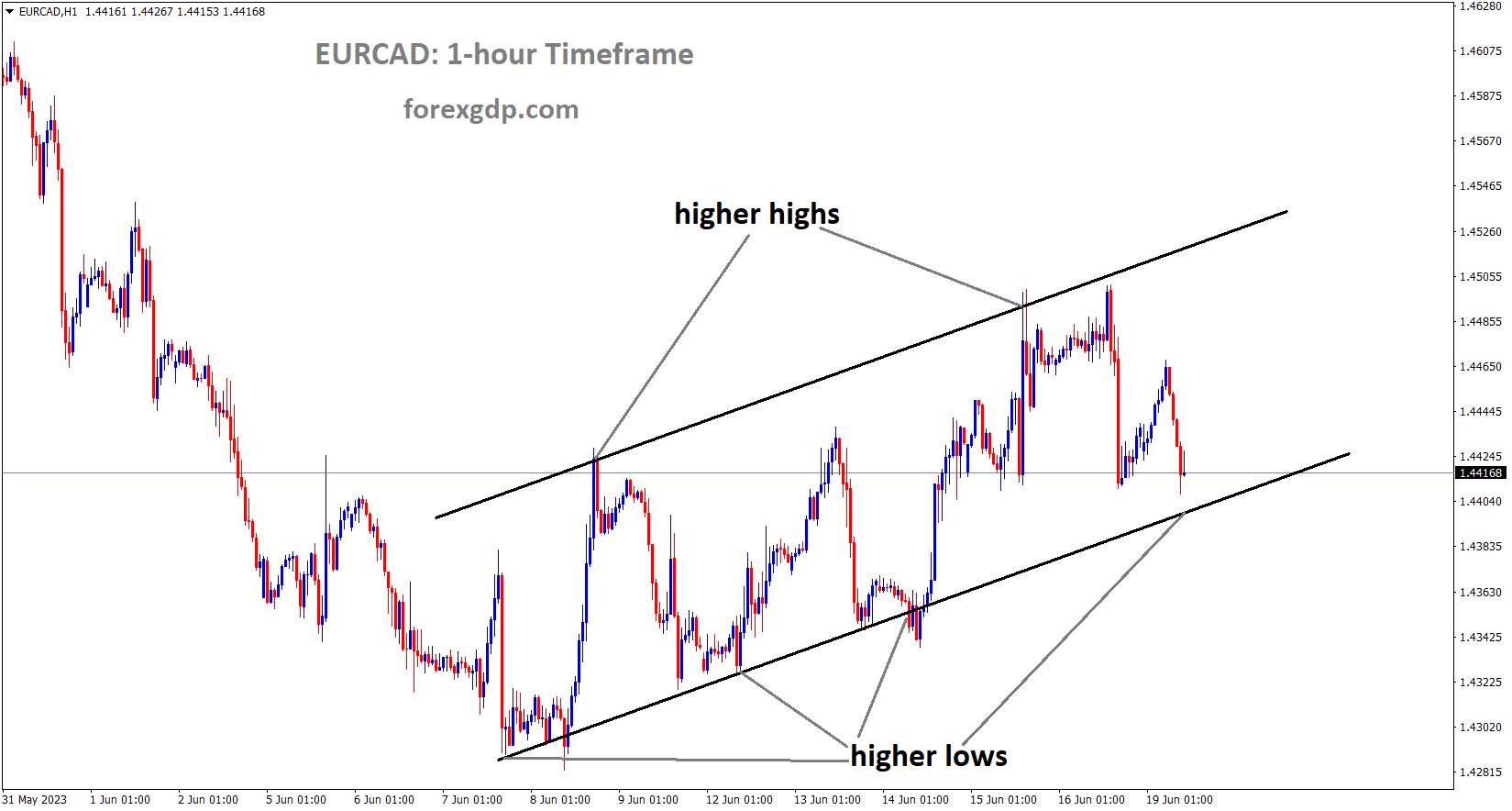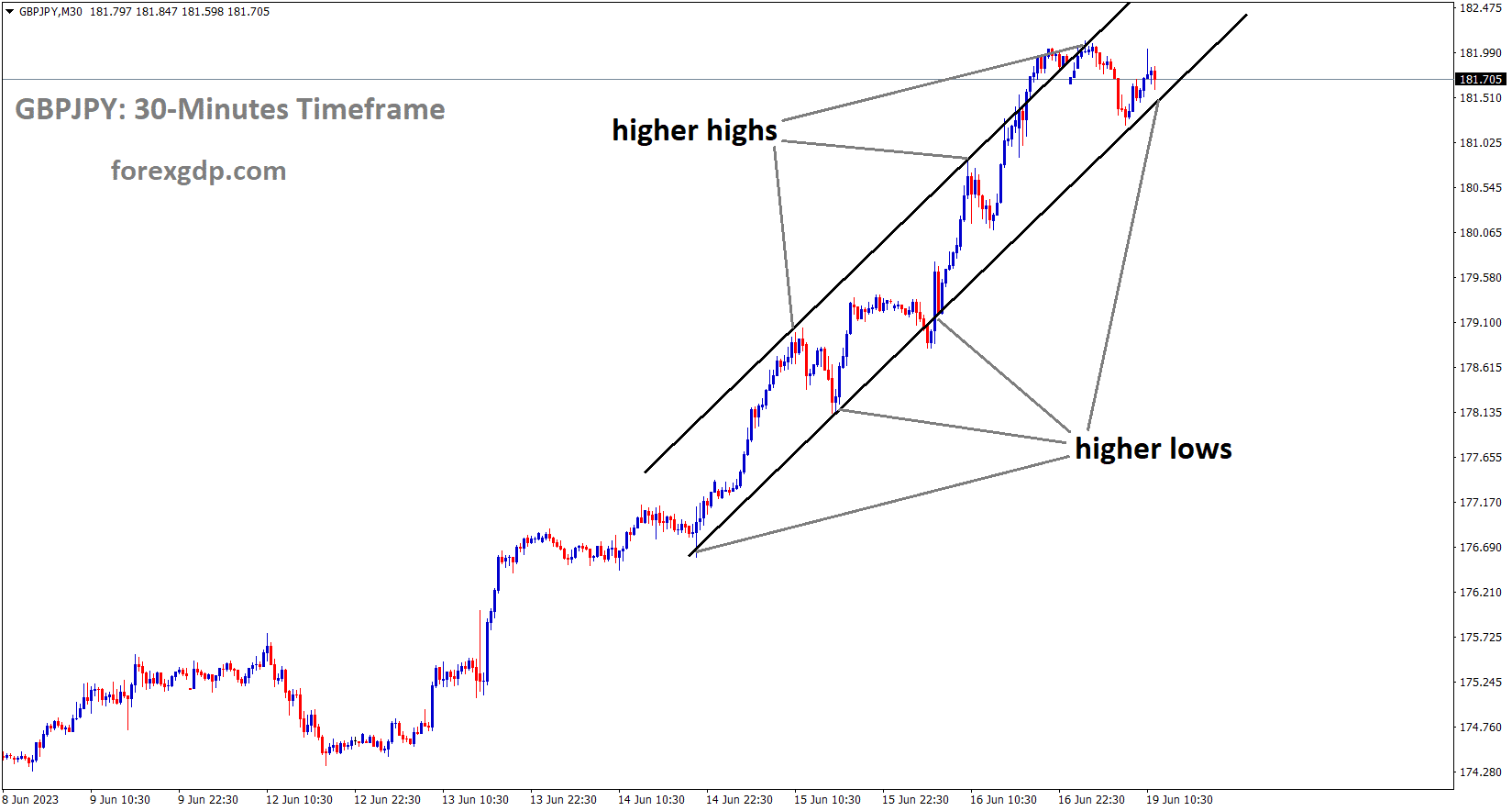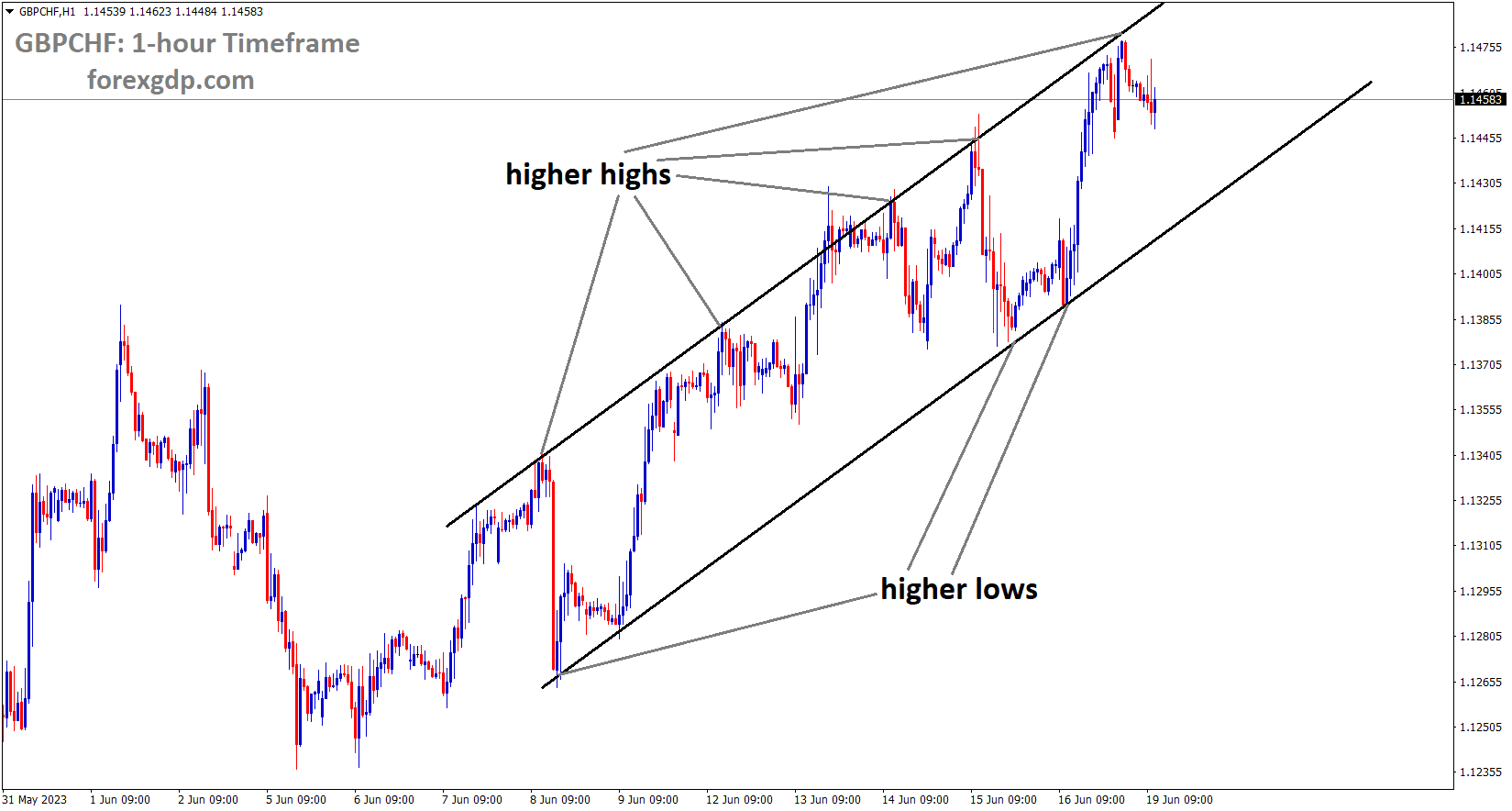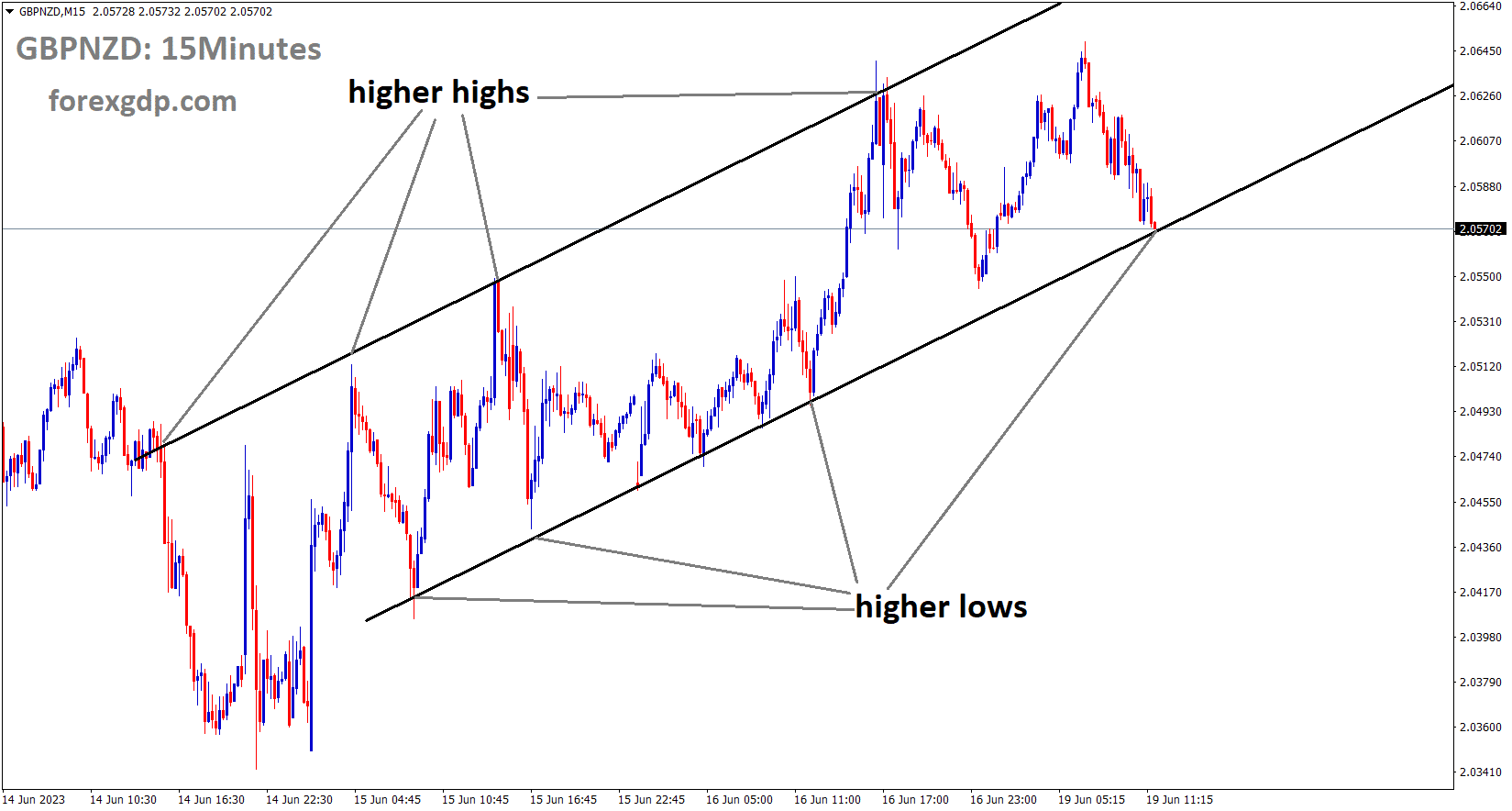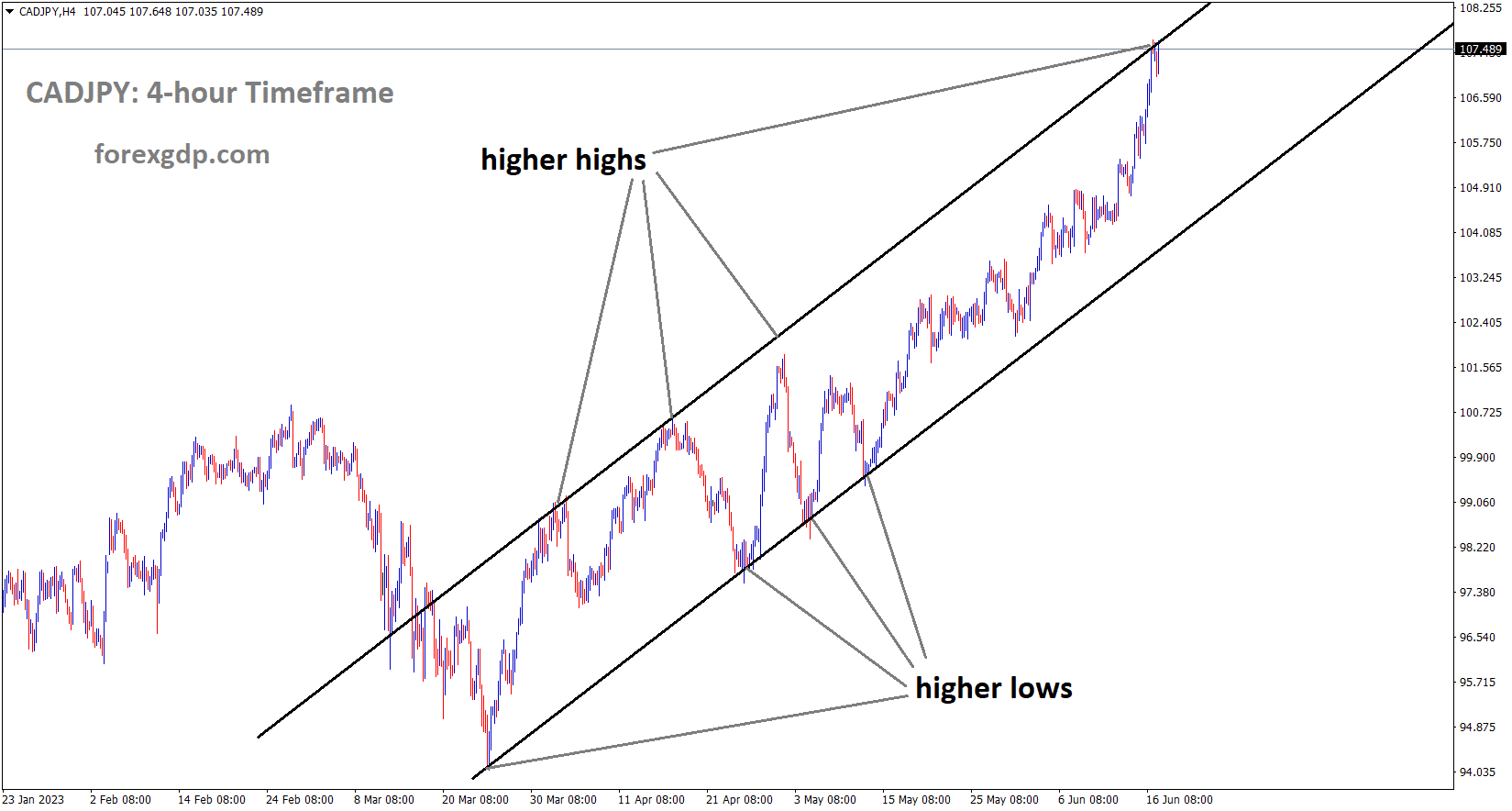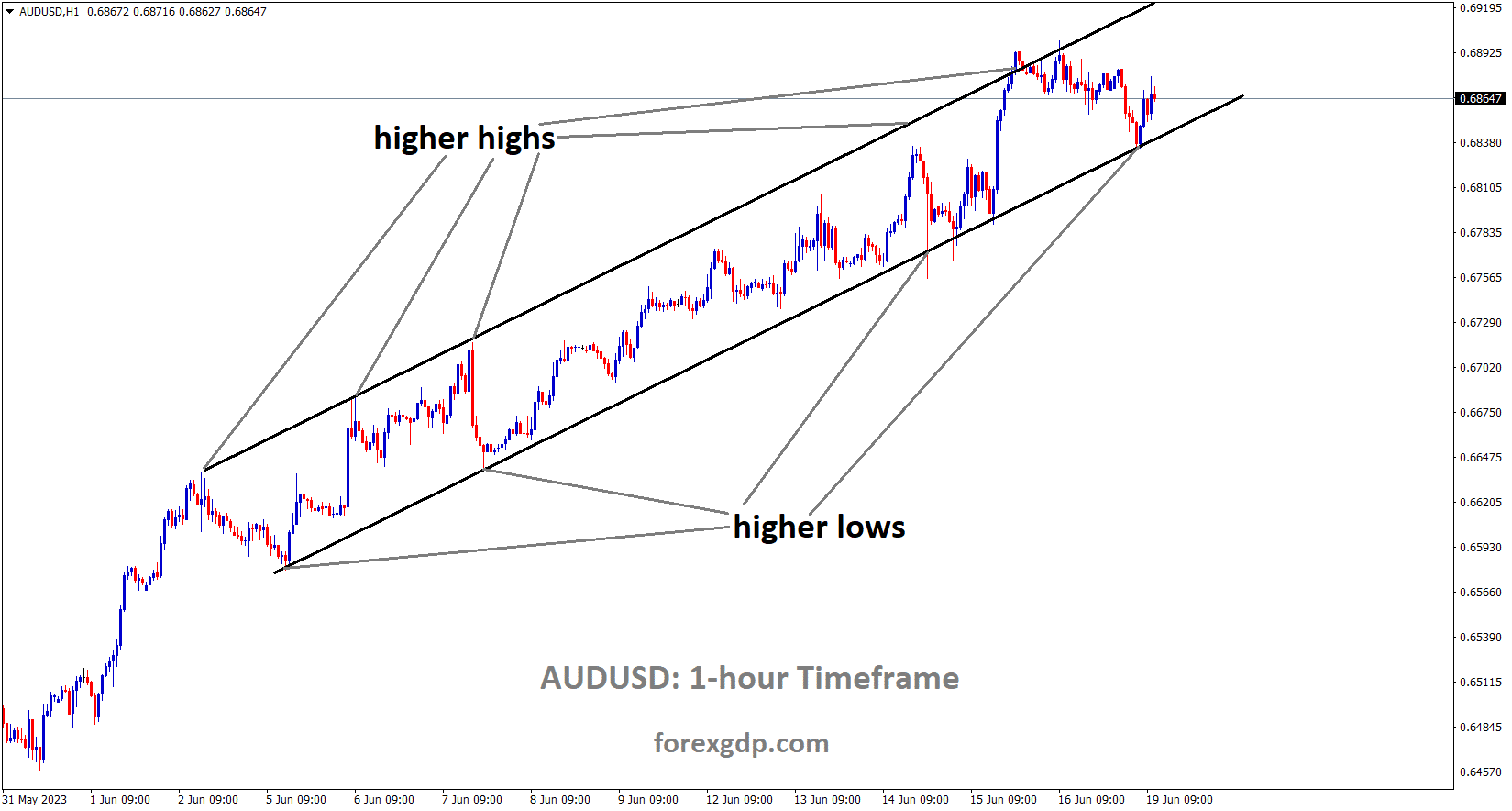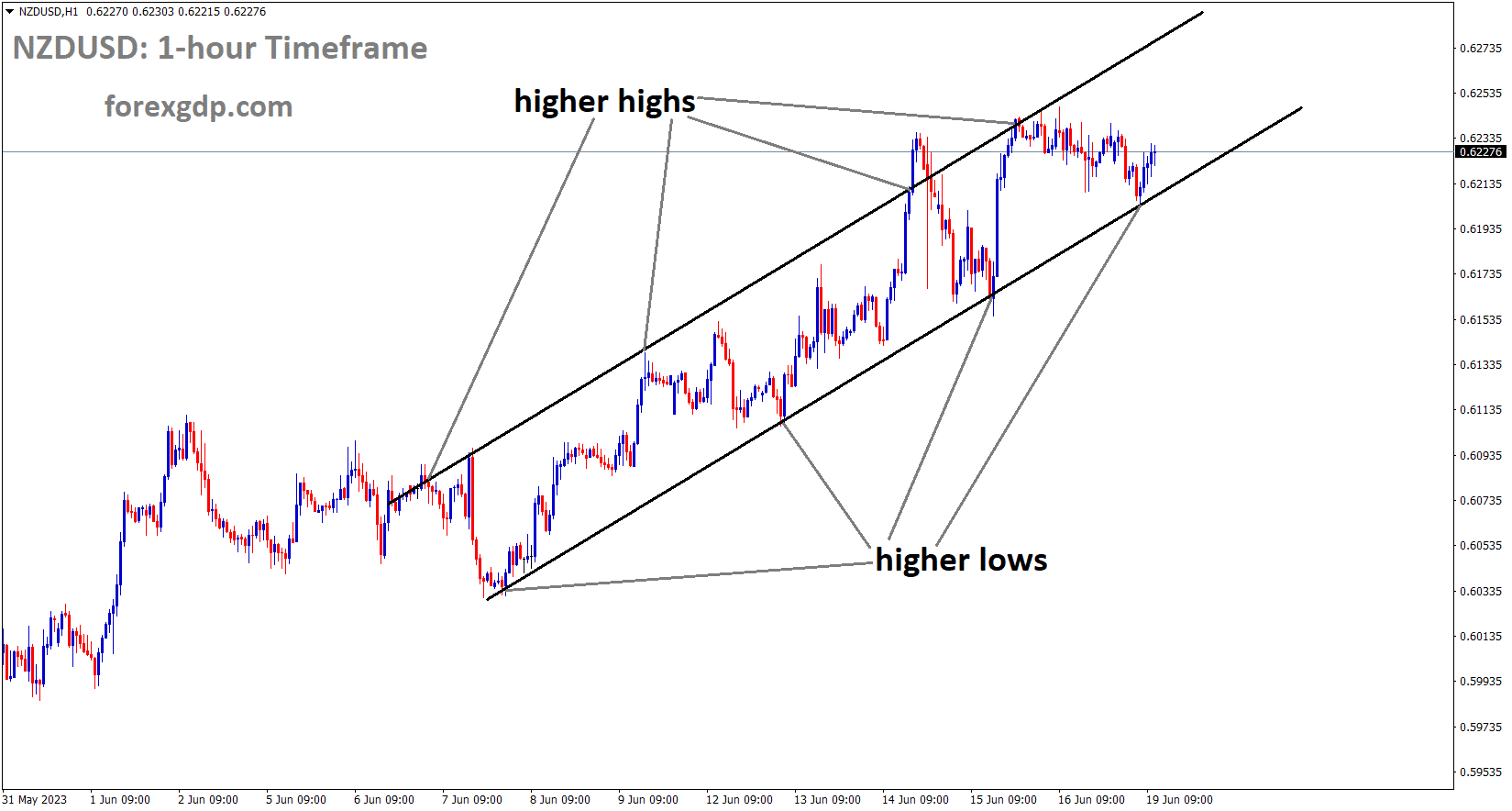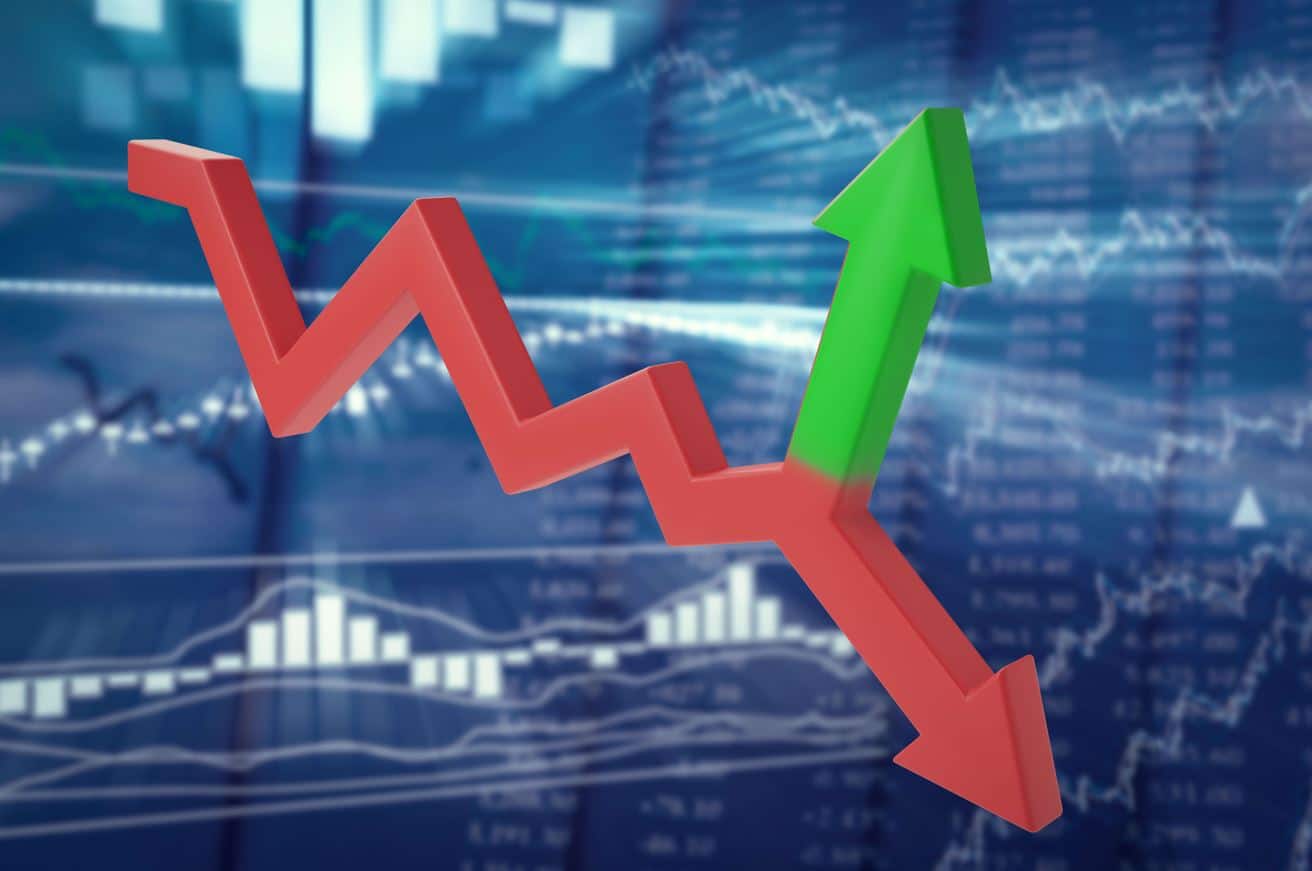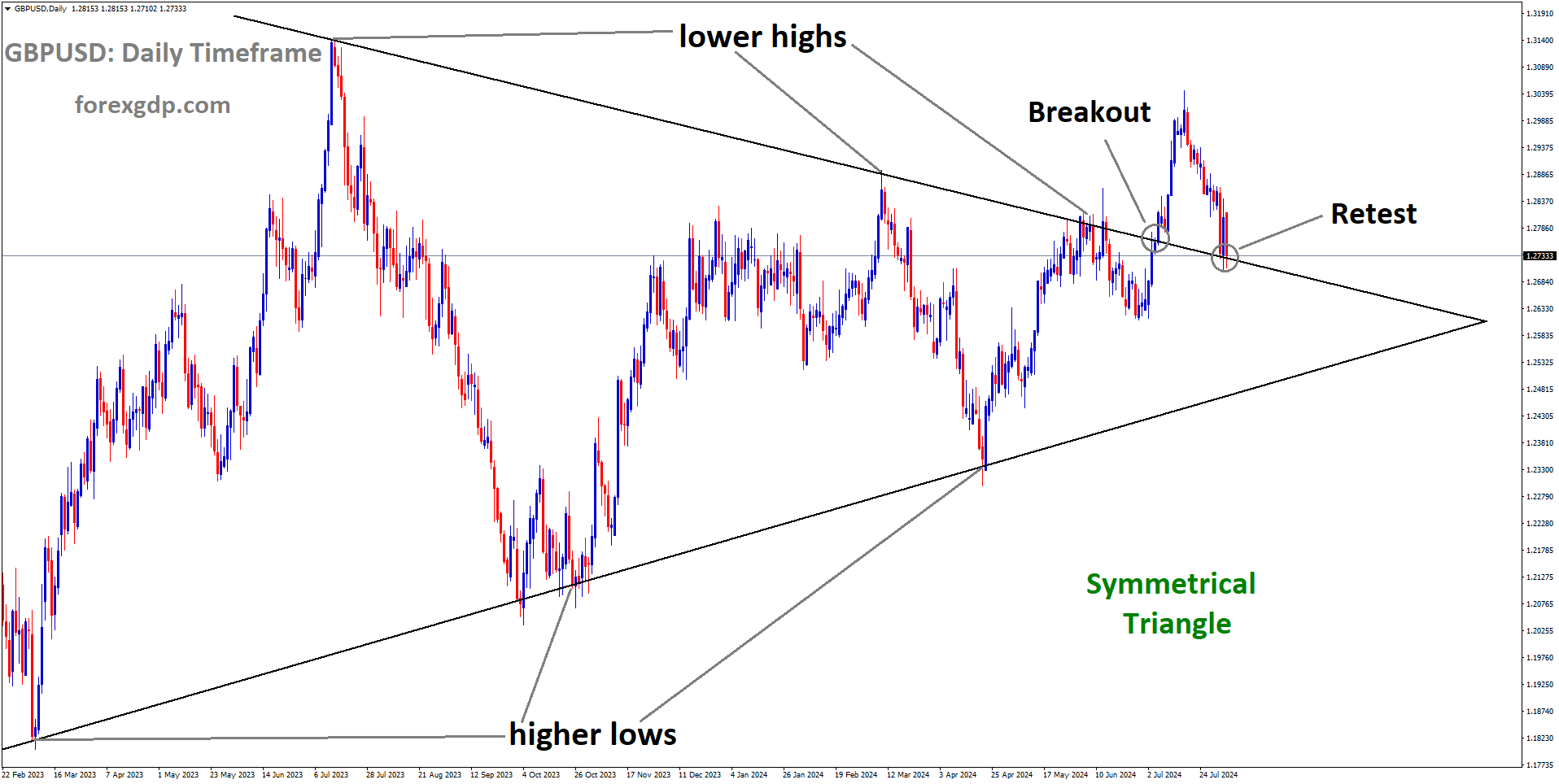GOLD Analysis
XAUUSD Gold Price is moving in the Descending channel and the market has reached the lower high area of the channel.
This week, the price of gold has been on an up-and-down roller coaster, sending conflicting signals. A week that held out great promise delivered on the volatility front but fell short of offering any insight into the potential future course of gold prices. Gold is currently trading at $1962/oz, slightly higher than last week’s close. Due to significant selling pressure on the US Dollar following the US Federal Reserve’s decision on Wednesday, Gold staged a Thursday recovery from 3-month lows. The Federal Reserve’s pause and future economic projections appear to be perplexing market participants. With Chair Powell effectively ruling out rate cuts in 2023, the Fed did upgrade their outlook on the peak rate from 5.5% to 5.6%, which makes the US Dollar’s decline even more intriguing.
When the Fed last took a break in June 2006, the price of gold experienced a period of consolidation and sideways price movement for the ensuing 12-month period, according to historical data. Are we in for a repeat performance this time? The similarities to the 2006 pause do not stop there either, as we all know the world economy was on the verge of a recession at the time. However, there are a number of significant differences that raise the question of whether we will experience a similar outcome in 2006, when risk assets rallied and gold underwent consolidation in preparation for the impending crisis of 2008. The yield curve, which was inverted by 90 bps at the time of writing, the most in 40 years, versus just 1 bps in June 2006, is one of the key indicators and differences.So why have not we yet noticed more overt indications? The increase in money supply since the beginning of the COVID 19 pandemic and its recent exacerbation by the Federal Reserve printing an additional $400 billion in March to stabilise the banking system are likely to be the cause of this situation. All of this keeps the equity markets moving along, but risk assets may experience pain in the weeks and months to come, so it may be prudent to keep an eye on that.
SILVER Analysis
XAGUSD Silver price has broken the Descending channel in upside.
The coming week’s US economic calendar is relatively quiet, with most of the data being concentrated on the housing market. In the coming week, the UK poses the biggest event risk for the developed markets, as both inflation and the Bank of England rate decision are likely to cause a spike in volatility. Jerome Powell, the chair of the Federal Reserve, has testified, and any additional remarks from Fed officials could increase volatility and have an impact on the US Dollar in the coming week. Following a rate reduction by the People’s Bank of China (PBoC) in an effort to spur growth, gold prices may experience an increase in demand and, consequently, prices. Market participants will be hoping for a rise in Chinese demand, with commodities and raw materials likely to profit if this happens.
USD Index Analysis
USD index is moving in the Descending channel and the market has reached the lower low area of the channel.
The US dollar index’s decline beneath crucial support indicates that the market appears to be at odds with the hawkish stance of the US Federal Reserve. At its meeting last week, the Fed kept interest rates unchanged but unintentionally delivered a hawkish surprise by forecasting two additional rate hikes in 2023 due to the dismally slow decline in inflation. The economy’s resistance to tighter financial conditions, the raising of the US debt ceiling, and lowered risks from stress in the banking sector may also have influenced the hawkish guidance. The market is pricing in a less than 100% chance of one rate hike this year, with rate cuts beginning as early as next year, even though the Fed’s dot plot predicts two more rate hikes before the end of the year. Conversely, Fed Chair Powell stated that he does not anticipate a rate cut until inflation has decreased meaningfully and significantly, which may take several years.
The perception that the Fed’s inflation forecasts have not kept pace with actual inflation and that producer price inflation and import prices already indicate a slowdown in activity appears to be the foundation of the market’s dovish pricing. The Fed upgraded its forecast for 2023 economic growth and anticipates a slower rate of inflation decline. By the end of 2023, the core PCE price index is predicted to decline from its current level of 4.7% to 3.9%, down from the 3.6% on-year observed in March.
Goldman Sachs analysts urge caution regarding the outlook for US inflation in their most recent client note, which was released on Friday. Although future inflation declines are something we anticipate, the pace of cooling is something the markets seem to be much more confident about than we do. The possibility of “delayed-onset inflation” in industries like healthcare is not being taken into consideration by investors. There will be little chance of a more rapid easing of price pressures in the event of a sharp slowdown in US economic growth.
EURCAD Analysis
EURCAD is moving in an Ascending channel and the market has reached the higher low area of the channel.
Due to the hawkish hike by the European Central Bank, oversold conditions, and a string of dismal macroeconomic data for the Euro area, the euro may try to recover some of the recent losses against some of its peers. Gains might be constrained, however, by still-high speculative long EUR positioning. The ECB increased interest rates last week by 25 basis points to the highest level in 22 years and hinted at additional rate increases in the months ahead. Back in May, there was a perception that the ECB might be about to pause its tightening campaign after mentioning that the tightening of financial conditions is forcefully trickling through the economy. However, ECB President Christine Lagarde’s comments last week that the institution still has ground to cover suggest that the central bank is in no hurry to slow down just yet, supporting the euro.
The Euro area economic surprise index indicates that recent macroeconomic data for the euro area have been disappointing. The series, as shown on the chart, has a tendency to mean revert, which suggests that the likelihood of a further downside surprise in the bloc is low. Incoming data that is better than anticipated could support the single currency. Having said that, speculative long EUR positioning is still near its highest level since 2020 and within the major currency space, indicating that the single currency is still overbought despite the recent correction.
GBPJPY Analysis
GBPJPY is moving in an Ascending channel and the market has rebounded from the higher low area of the channel.
Bank of Japan maintained its ultra-accommodative stance and U.S. Treasury yields started to rise ahead of the long weekend. To put things in perspective, at the conclusion of its June policy meeting, the BoJ maintained its short-term interest rate target at -0.10% and left its yield curve control programme unaltered, signalling little intention to change its stance in the upcoming months. The Japanese yen is likely to experience weakness in the near term, especially when compared to high-yielding peers like the U.S. dollar, as a result of the central bank’s decision to maintain its current course and protect the country’s fragile recovery and emerging inflation trend after decades of deflation.
GBPCHF Analysis
GBPCHF is moving in an Ascending channel and the market has fallen from the higher high area of the channel.
The Swiss Franc pair illustrate the market’s uncertainty during the US Juneteenth holiday and its cautious mindset prior to the Swiss National Bank’s decision on its monetary policy meeting this coming week. Swiss Franc bears are pushed by expectations of further rate hikes from the SNB. SNB Governor Thomas Jordan stated earlier in June that “it is really important to bring Swiss inflation to a level of price stability. The decision-maker indicated that they were willing to raise rates even before inflation increased.
Thomas Barkin, president of the Richmond Fed, on the other hand, warned that “further increases in rates could create the risk of a more significant slowdown in the economy SNB is likely to announce a 0.25% rate increase, any surprises cannot be completely ruled out, which means the pair sellers may still be recalled. But Fed Chair Jerome Powell, who will be giving his biannual testimony, can support the hawkish bias and take on the pair sellers. Preliminary PMIs for June are also important for determining short-term trends.
GBPNZD Analysis
GBPNZD is moving in an Ascending channel and the market has reached the higher low area of the channel.
The British pound has reached fourteen-month highs against the US dollar, and given the upcoming week’s economic developments, it is likely to continue to rise. The increase in the value of the currency is based on the idea that, in order to resolve the UK’s particularly severe inflation issues, the Bank of England still needs to raise interest rates significantly more than the US Federal Reserve has. Both the official inflation data, which will be released on Wednesday, and the Bank of England’s June monetary policy decision will be released in the upcoming week. The most recent set of Consumer Price Index data revealed a slight slowdown in annualised inflation. At 8.7%, it is still significantly higher than the 2% that the Bank of England is supposed to be aiming for. Since May 2021, there has not been a decrease in the rate. Furthermore, the inflation of food prices, which disproportionately affects low-income earners, persists.
The Bank of England may feel that it is currently racing against time to prevent inflation expectations from becoming entrenched as wage increases are also starting to pick up speed. The case for higher interest rates and, consequently, a higher pound is very strong when you consider the still-tight labour market and the fact that the UK economy is doing somewhat better than the admittedly very bleak forecasts it faced at the start of this year. The important Bank Rate is reportedly expected to increase this week by a quarter of a percentage point. When it reaches 4.75%, it will be at its highest level since April 2008. The BoE might decide to aim for a larger, half-point increase. Of course, the pound has already experienced some very significant gains, and this week’s strong inflation data combined with a hawkish Bank of England may prompt some to take profits by the week’s end. But even with that risk present, sterling’s path of least resistance still appears to be upward. Another danger could be that the Fed’s own rate-setters sound more pessimistic this week.
CADJPY Analysis
CADJPY is moving in an Ascending channel and the market has reached the higher high area of the channel.
Loonie pair breaks a two-day downtrend and, during a session that was sluggish due to the Juneteenth holiday in the US, justified the broad US Dollar recovery as well as the depressed prices of WTI crude oil, Canada’s main export.
The WTI crude oil sellers are attempting to break through the $71.00 round mark while posting their first daily loss in seven days. Reports that several banks have lowered their growth projections for China and worries about a heavy Iranian oil import due to a potential US-Iran deal seem to be weighing on the price of WTI crude oil. Concerns about the rate hike in July are defended by Fed policymakers, and this weighs on sentiment and the price of black gold while helping the DXY.
AUDUSD Analysis
AUDUSD is moving in an Ascending channel and the market has rebounded from the higher low area of the channel.
After a spectacular rally last week that reached a 4-month high, the Australian Dollar has eased lower to start Monday. Solid employment data showed a 3.6% unemployment rate, which raises the possibility of an RBA rate hike in a fortnight. At their monetary policy meeting on July 4, the Federal Reserve is expected to raise interest rates by 25 basis points, according to the interest rate market. Today is a US holiday, which could make trading conditions less crowded.
NZDUSD Analysis
NZDUSD is moving in an Ascending channel and the market has rebounded from the higher low area of the channel.
In order to break a four-day winning streak, the NZDUSD pair draws some sellers near the 0.6235 area on Monday and continues its steady intraday decline through the Asian session. Spot prices have since fallen to a new daily low of 0.6200, which is a further retreat from the monthly peak reached on Friday. Following the Federal Reserve’s (Fed) hawkish outlook, the US Dollar gains some momentum for the second straight day and ends up being a significant factor exerting some pressure on the NZDUSD pair. It is important to remember that the Fed last week decided to keep interest rates unchanged while also indicating that they might still need to increase by as much as 50 basis points by the end of the year. In addition, a more relaxed atmosphere in the equity markets helps the safe-haven dollar and repels investors from the risk-averse Kiwi. Hopes for additional rate cuts by the People’s Bank of China are overshadowed by worries about a global economic slowdown, particularly in China, and this is continuing to dampen investor confidence. The Reserve Bank of New Zealand’s explicit declaration that it was finished with its most ferocious rate-hike cycle since 1999 also serves to weaken the New Zealand Dollar. However, the belief that the Fed’s year-long tightening of monetary policy is about to come to an end may serve to limit gains for the USD and limit losses for the NZDUSD pair.
Before Fed Chair Jerome Powell’s two-day congressional testimony on Wednesday and Thursday, traders may choose to avoid making risky bets and instead stay on the sidelines. Investors will be on the lookout for brand-new cues regarding the Fed’s path for future rate hikes, which will be crucial in determining the near-term USD price dynamics and giving the NZDUSD pair some significant momentum. As a result, it is wise to hold off on determining whether the recent move-up seen over the past three weeks or so has peaked until there has been significant follow-through selling.
Don’t trade all the time, trade forex only at the confirmed trade setups.
Get Live Free Signals now: forexgdp.com/forex-signals/

